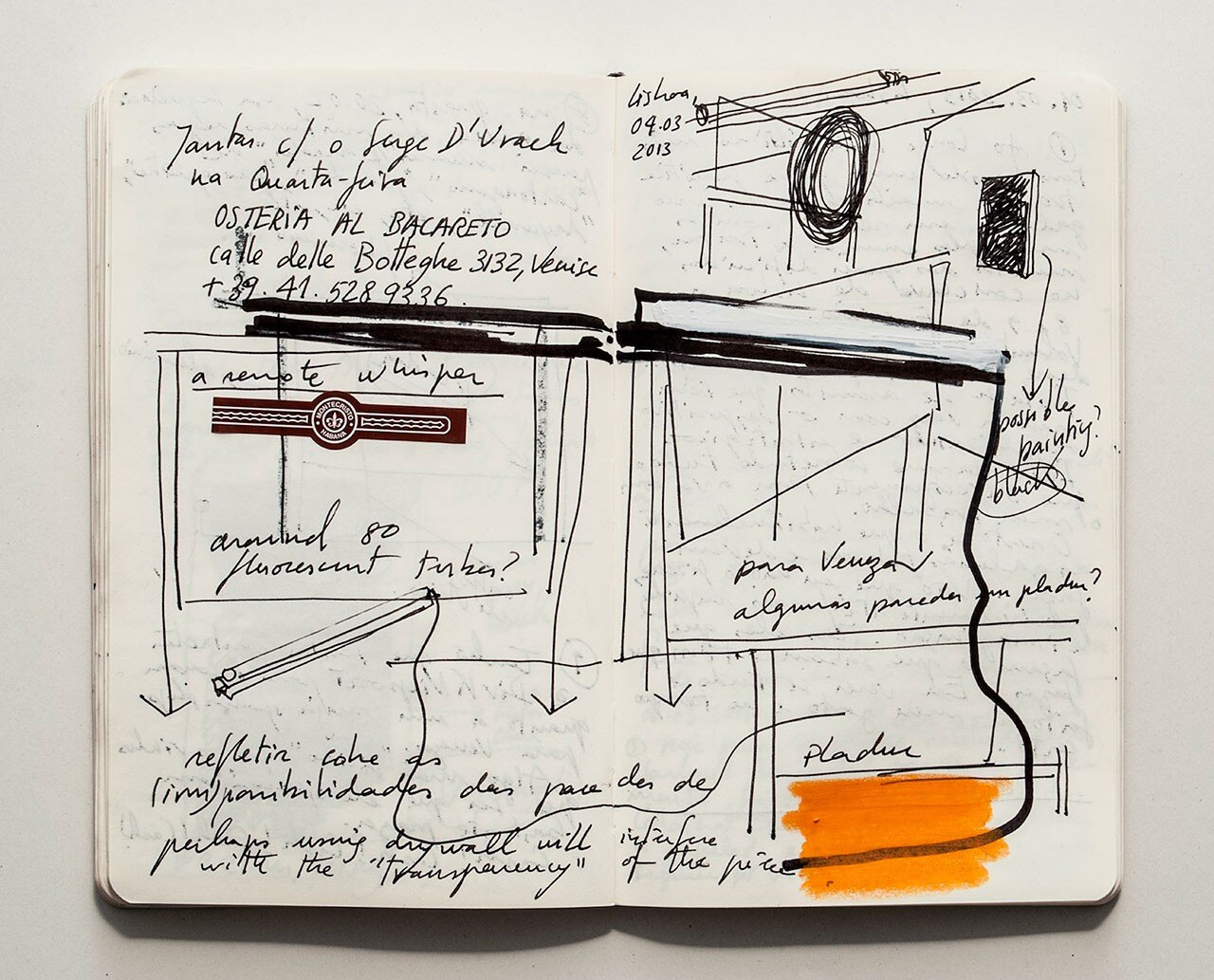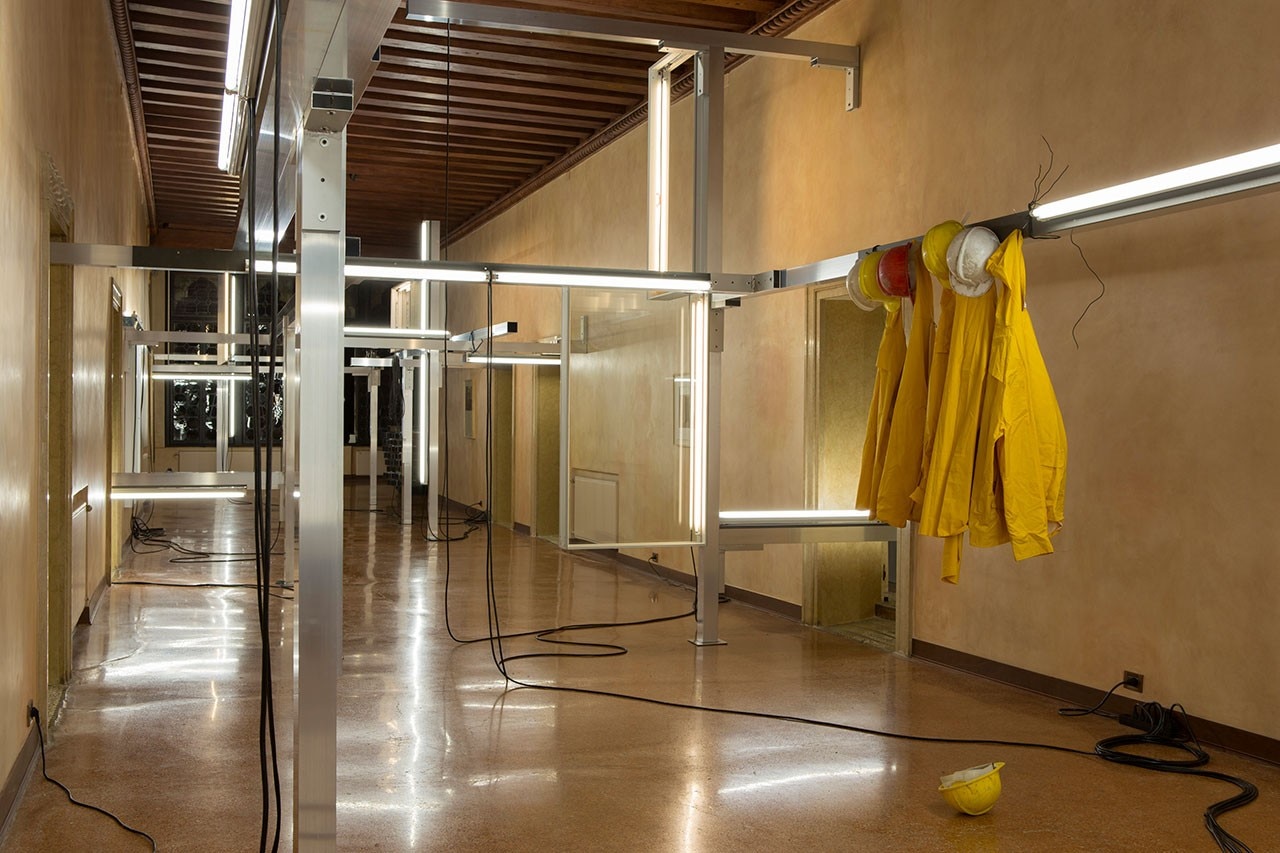
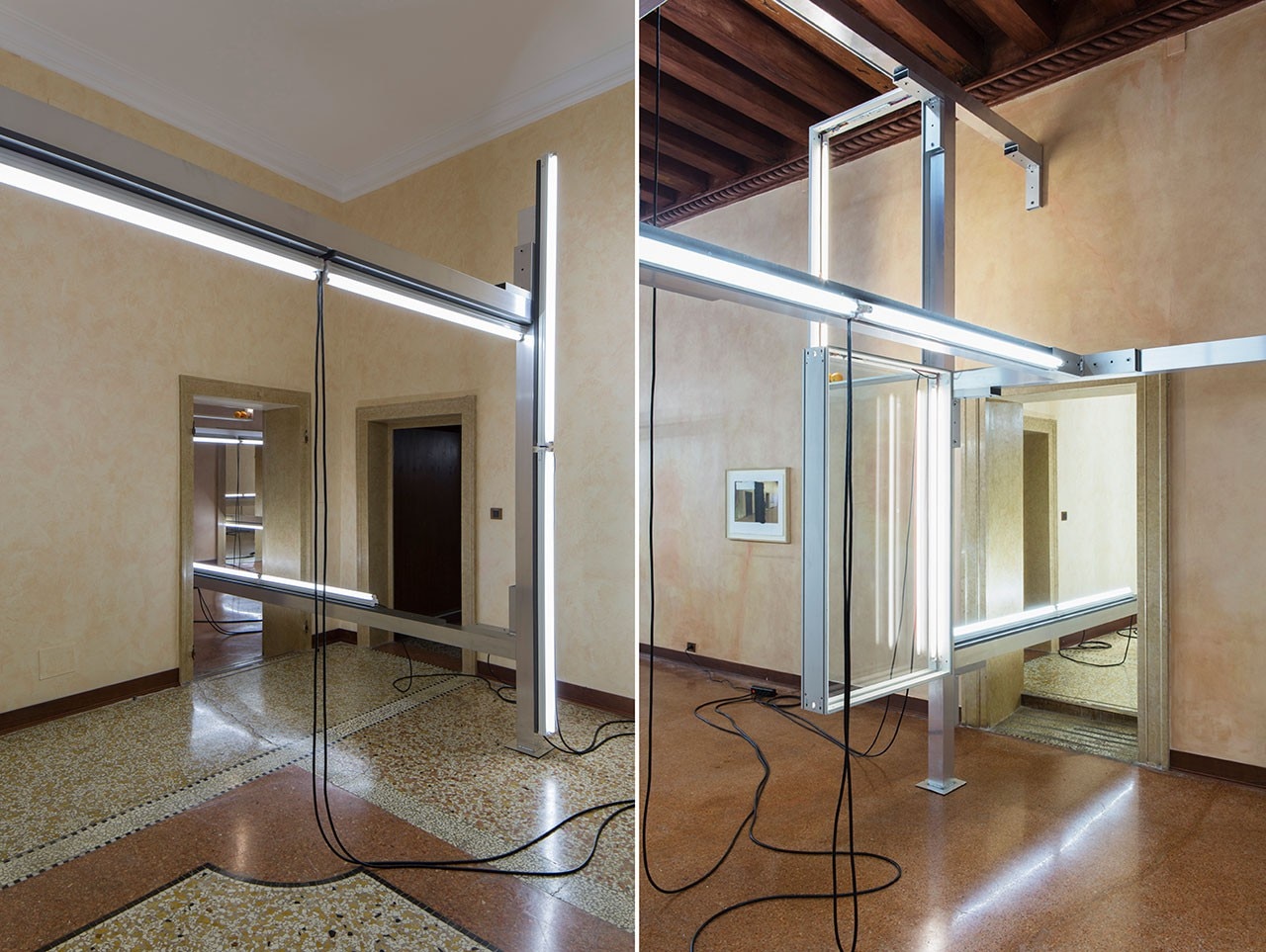
“Every so often there are those who define my work in relation to architecture”, he explains, “I’m not so convinced. What I am interested in is more the aspect linked to the construction. For me architecture is a political and social device that serves to organise a group of people within an urban territory that is in a state of tension: it is an ideological exercise for resolving the system of social relationships in the urban context.
Instead my work starts before that, on an anthropological and philosophical level. The work of the builder is to understand the position of man in relation to nature.
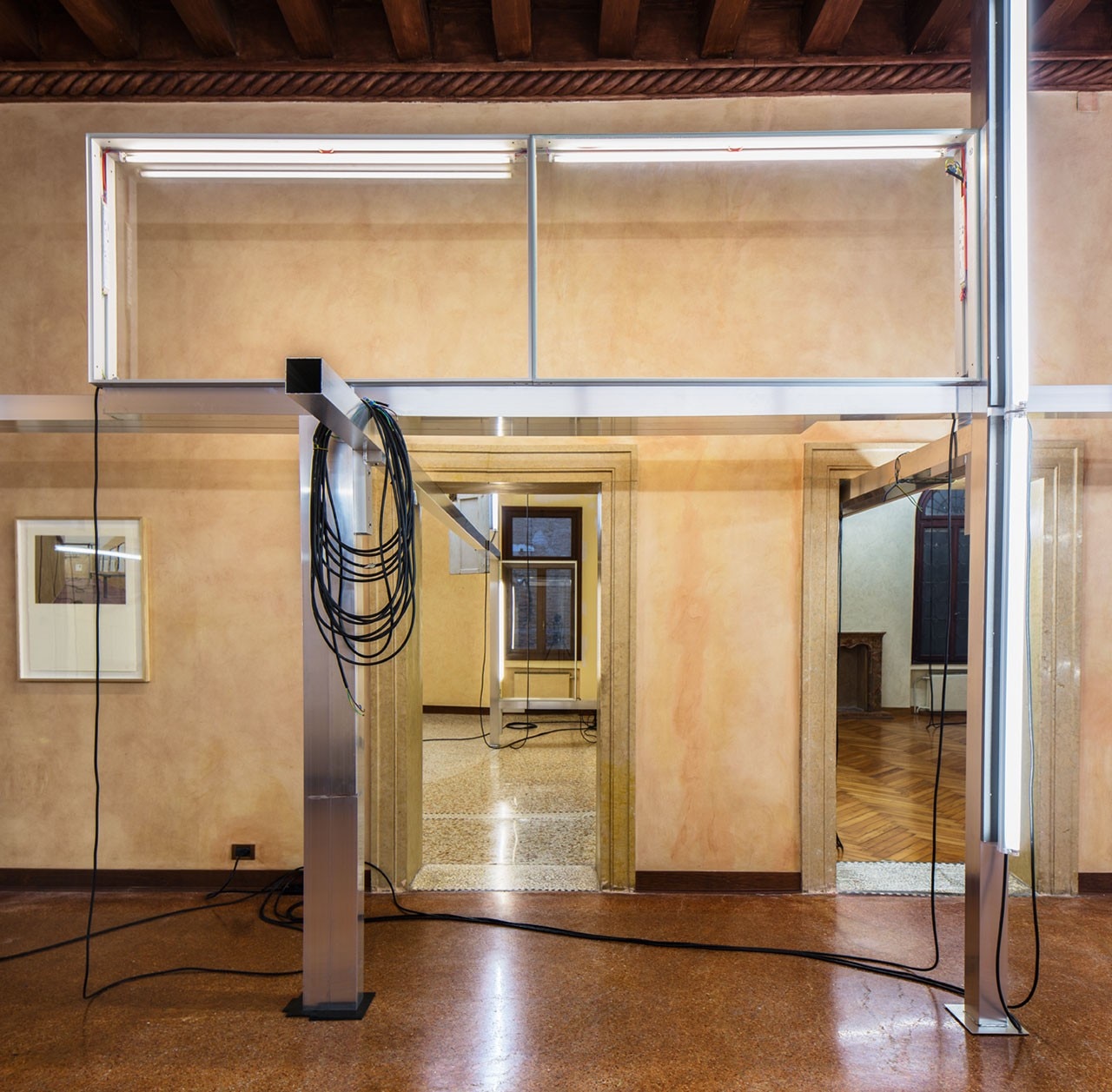
Loredana Mascheroni: How have you made your ideas tangible in the project for the Venice Biennale?
Pedro Cabrita Reis: I like to make works that contaminate different spaces, like a body that enlarges and absorbs space, that calls out to it, integrates it into its identity. When I visited Palazzo Falier last November I was struck by its dual spirit: it was a typical Venetian palace yet at the same time totally minimalist. I liked its austerity and it made it suitable for creating a tension: it had a particular temperature. A Remote Whisper is the start of an experience of time and space that is not physically defined, an intangible situation where the trajectory of the viewer’s visit determines their perception of the work. The route through the rooms is interrupted by elements that fracture it such as workers’ orange jackets, jugs of water… like in a score where silence contributes to creating the melody as much as the notes do. These moments of interruption to the journey compel us to start again and wipe out the process of comprehension.
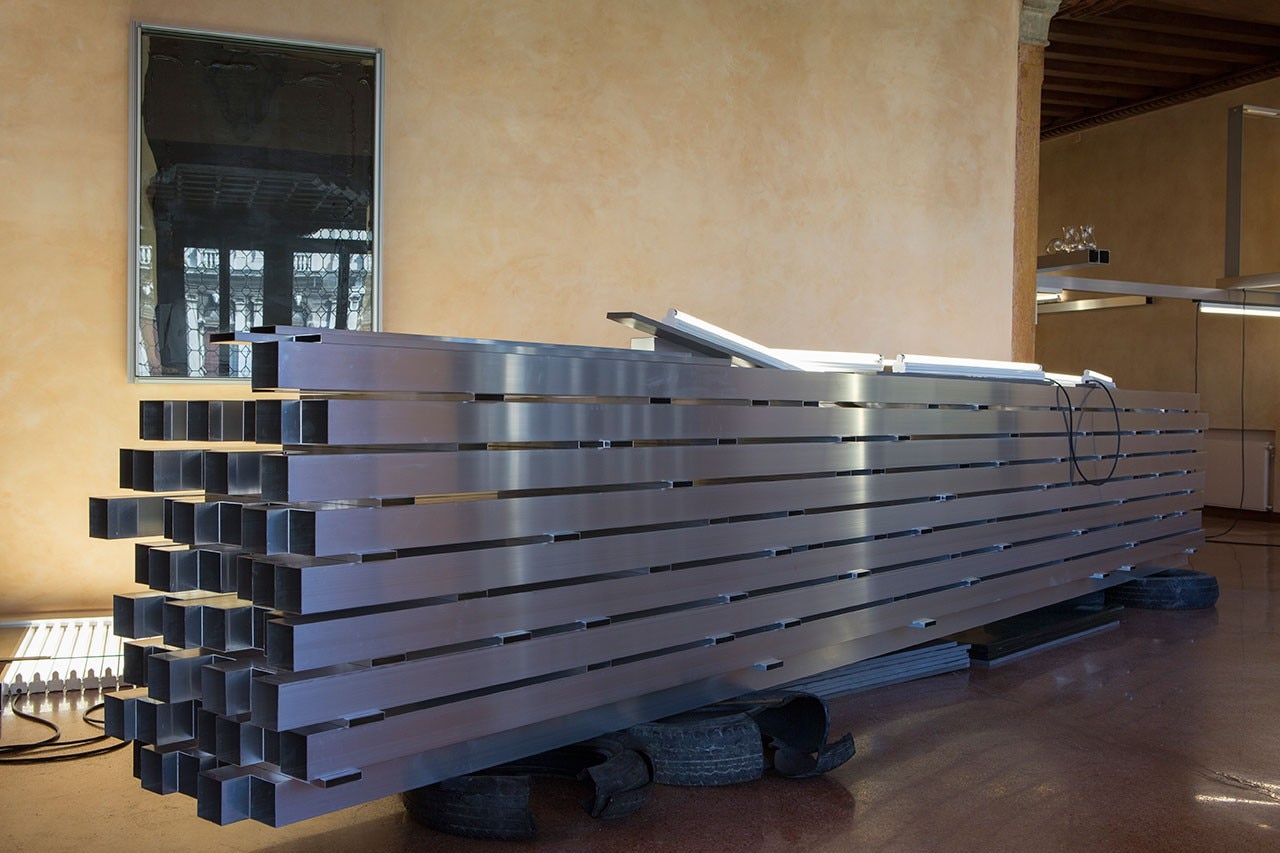
Loredana Mascheroni: How was the installation created in practice? Did you start with a model?
Pedro Cabrita Reis: I began with a very rich and layered model that helped me to focus on the different perspectives according to which to address the installation. I highligthed a complex network of perspectives, a strategy for understanding reality. A work of art has the task of extending intelligence thanks to the creation of the perfect question, a utopian question that encompasses everything. The model was the structural and conceptual point of reference but the real work I did directly at Palazzo Falier. Models and work are not linked to each other. Usually I have everything in my mind. Nothing is done in a definitive way: you need to by very alert and ready to change, to forget what was done in the past. It’s like hunting in the countryside: you don’t need to have much equipment but be able to jump and move around.
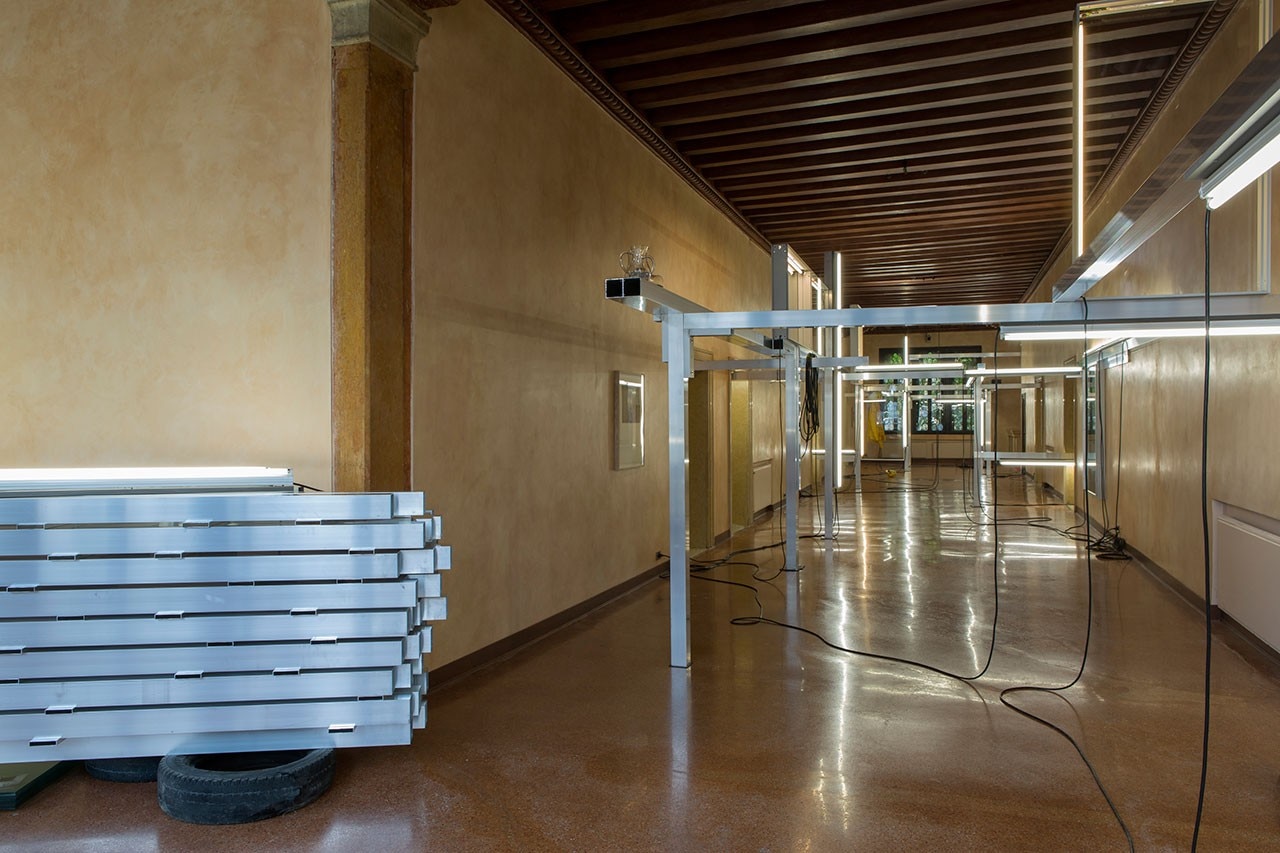
Loredana Mascheroni: One of the things that characterises your work is to include found objects.
Pedro Cabrita Reis: Along the street that led home from Palazzo Falier we found graffiti from anti-fascist Venice that we incorporated into the project, as well as other materials found in the city. Everything that is found in everyday life is important because it can speak to you in a very specific way, being with it the history – the remote whispers – of the place it belongs to. When I walk around the city I note what I encounter that then becomes part of my work. That’s why every work is different, it brings with it the spirit of the place that houses it.
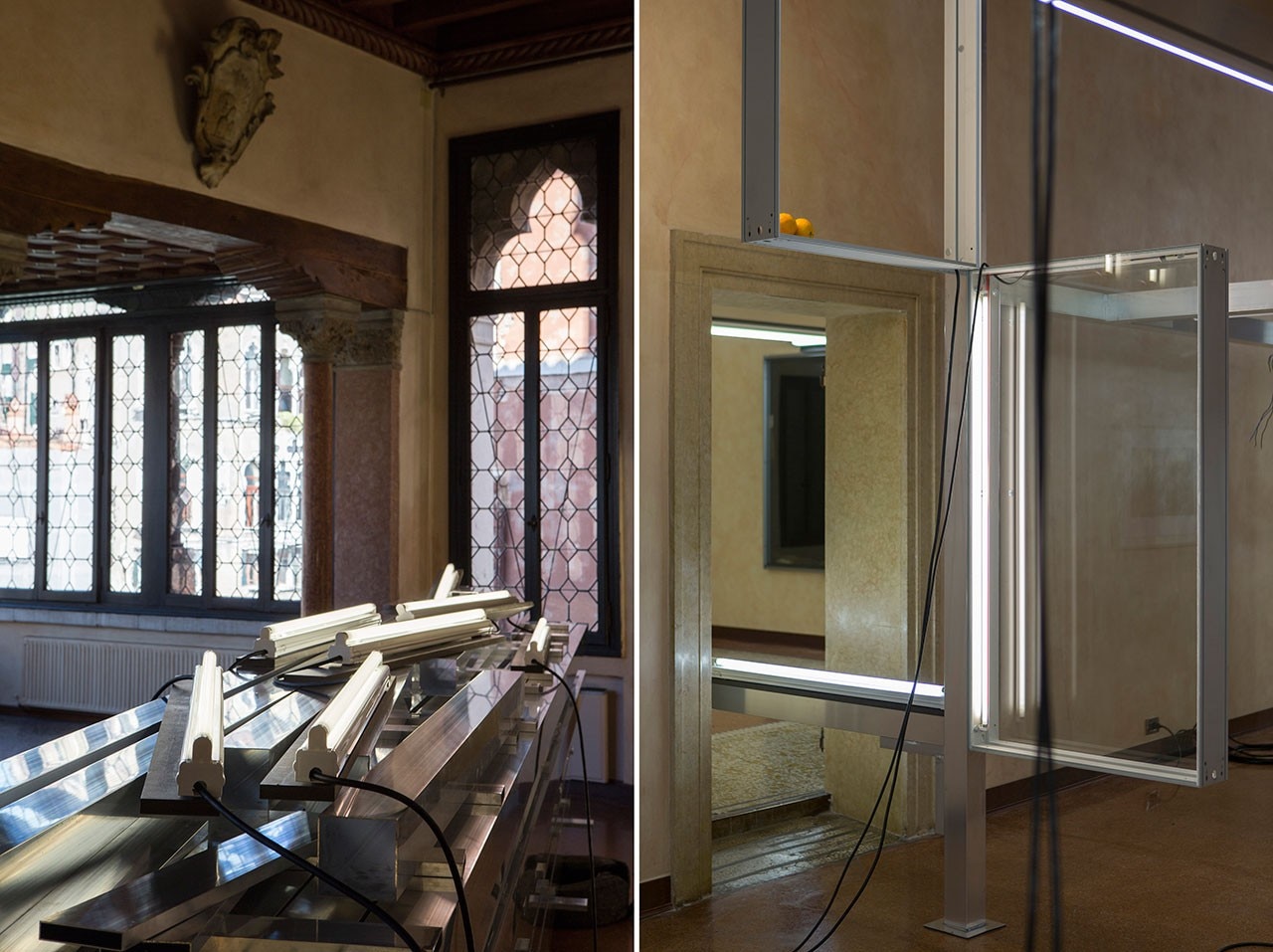
Loredana Mascheroni: The relationship with space is central to your work.
Pedro Cabrita Reis: It is never a matter of filling space with art that is a practice that slides into interior decoration. Behind a space there is an idea, a history, a moment, a journey. You need to be able to propose an intervention that does not negotiate with space but that places itself in continuation with it, a work of renewal. I believe in the importance of starting from the ruins to reconstruct.
